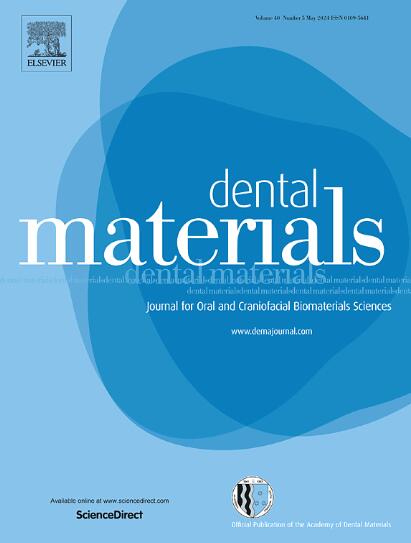Mechanical performance of endocrown restorations in anterior teeth: A systematic review and network meta-analysis
IF 4.6
1区 医学
Q1 DENTISTRY, ORAL SURGERY & MEDICINE
引用次数: 0
Abstract
Objectives
To conduct a systematic review and network meta-analysis (NMA) to answer whether endocrown restorations have similar mechanical behavior than other traditional core-crown systems with or without intracanal posts for the rehabilitation of anterior endodontically treated teeth.
Methods
The review followed the PRISMA Extension Statement for NMA. Studies were identified by a systematic search to select reports on endocrown restorations in anterior teeth. A search was performed in PubMed (MEDLINE), Scopus, Web of Science, Embase, SciELO, and LILACS databases. Articles evaluating mechanical performance through in vitro and finite element analysis (FEA) studies were selected and the risk of bias was assessed using the RoBDEMAT and ROBFEAD tools, respectively. The data were analyzed qualitatively and quantitatively through NMA using the MetaInsight tool.
Results
Eleven articles were included (eight in vitro and three with FEA design). Six in vitro studies were evaluated using NMA. Composite resin endocrowns showed greater load-to-fracture and lower occurrence of catastrophic failures than traditional restorations. Combining glass fiber post with composite restoration also showed good strength behavior. Regarding FEA studies, two out of three studies showed a more homogeneous distribution of stress for the endocrown group.
Significance
Endocrowns performed similarly to or better than conventional restorative strategies, with composite resin being the most recommended material of choice. The rehabilitation of endodontically treated anterior teeth with extensive coronal destruction is typically challenging for the dentist, and there is still no consensus in the literature that provides conclusive answers for choosing the appropriate material and restorative strategy. Exploring new techniques and materials that make this procedure easier for the dentist and guarantee good results is paramount.
前牙内冠修复体的机械性能:系统综述和网络荟萃分析。
研究目的进行一项系统性综述和网络荟萃分析(NMA),以回答在牙髓治疗前牙的修复中,内冠修复体是否具有与其他带或不带根管内桩的传统核心冠系统相似的机械性能:综述遵循 NMA 的 PRISMA 扩展声明。通过系统性检索确定了有关前牙内冠修复的研究报告。在 PubMed (MEDLINE)、Scopus、Web of Science、Embase、SciELO 和 LILACS 数据库中进行了检索。筛选出通过体外研究和有限元分析(FEA)研究评估机械性能的文章,并分别使用 RoBDEMAT 和 ROBFEAD 工具评估偏倚风险。使用 MetaInsight 工具对数据进行了定性和定量分析:共纳入 11 篇文章(8 篇体外研究和 3 篇有限元分析设计)。使用 NMA 评估了六项体外研究。与传统修复体相比,复合树脂内冠显示出更大的载荷-断裂比和更低的灾难性失效发生率。玻璃纤维桩与复合树脂修复体的结合也显示出良好的强度表现。在有限元分析研究方面,三项研究中有两项显示内冠组的应力分布更均匀:内冠的性能与传统修复策略相似或更好,复合树脂是最推荐的选择材料。对牙科医生来说,修复经牙髓治疗后有广泛冠状面破坏的前牙通常具有挑战性,目前文献中仍未就选择合适的材料和修复策略达成共识。探索新技术和新材料,让牙医更轻松地完成这一过程,并保证良好的效果,这一点至关重要。
本文章由计算机程序翻译,如有差异,请以英文原文为准。
求助全文
约1分钟内获得全文
求助全文
来源期刊

Dental Materials
工程技术-材料科学:生物材料
CiteScore
9.80
自引率
10.00%
发文量
290
审稿时长
67 days
期刊介绍:
Dental Materials publishes original research, review articles, and short communications.
Academy of Dental Materials members click here to register for free access to Dental Materials online.
The principal aim of Dental Materials is to promote rapid communication of scientific information between academia, industry, and the dental practitioner. Original Manuscripts on clinical and laboratory research of basic and applied character which focus on the properties or performance of dental materials or the reaction of host tissues to materials are given priority publication. Other acceptable topics include application technology in clinical dentistry and dental laboratory technology.
Comprehensive reviews and editorial commentaries on pertinent subjects will be considered.
 求助内容:
求助内容: 应助结果提醒方式:
应助结果提醒方式:


